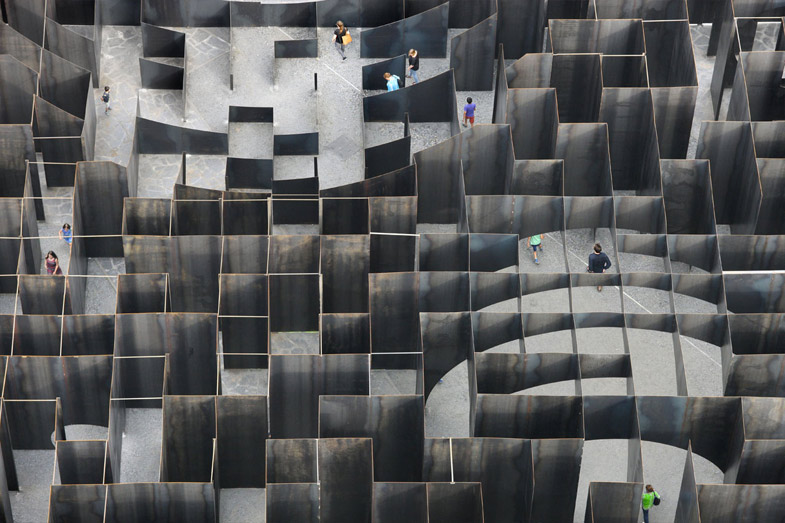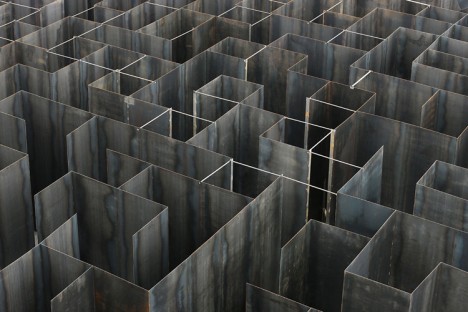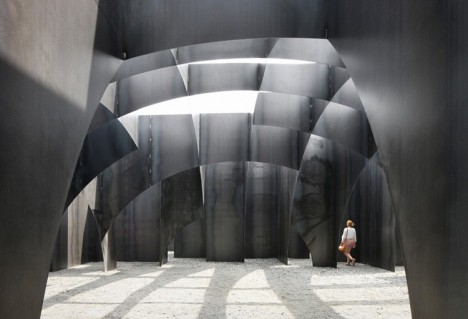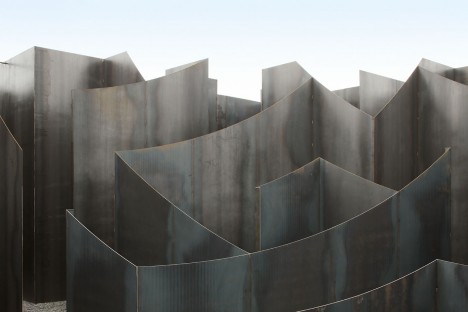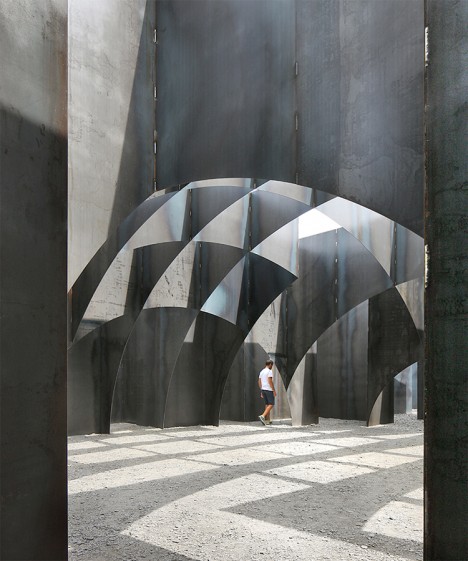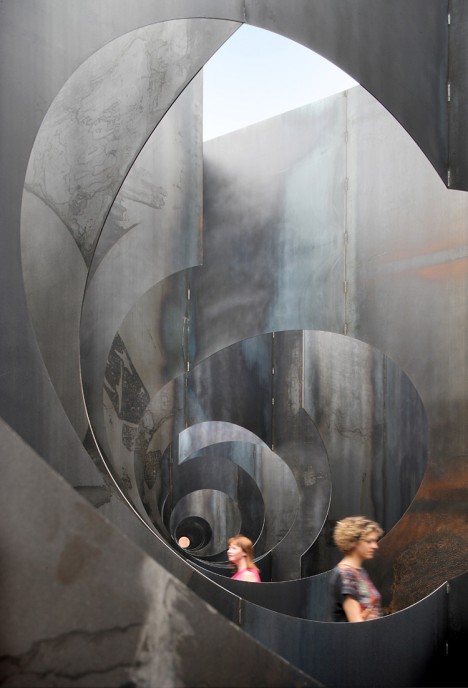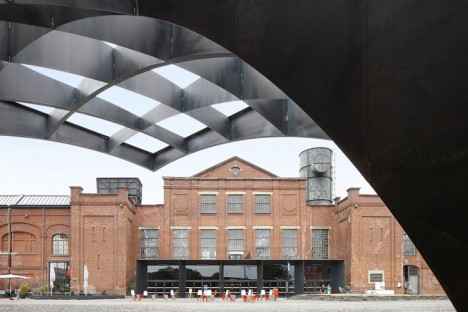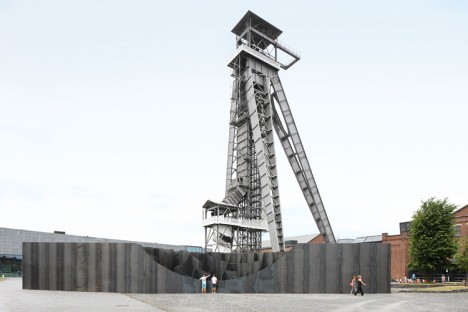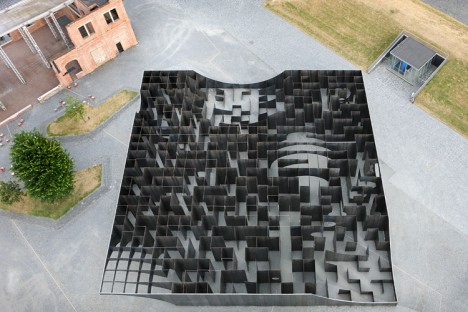This steel labyrinth looks like something left behind after the production of a dystopian film, its irregular grid of steel rising and falling onto the concrete surface outside Belgium’s C-mine art center. Designed by Gijs Van Vaerenbergh, the maze is an immersive experience in what the artist sees as architecture in its essential form: “a composition of walls that define spaces.” Made of 186 tons of metal, the installation features vertical surfaces towering over 49 feet in the air to properly disorient visitors.
Entering the maze, you pass through a series of geometric doorways cut into the steel, including a sphere, a cylinder and a cone. Depending on where you are in the maze, these cut-outs might offer a tiny glimpse of what’s on the other side of a wall, or open to reveal a succession of similar cut-outs passing all the way through the installation.
The steel, and how it is cut and arranged, offers a unique architectural visual that changes according to your perspective, shifting from abstract lines into distinct geometries and sometimes creating optical illusions that make you uncertain whether you’re looking at a two-dimensional or three-dimensional surface.
A nearby installation of antique mine shafts offers a different way to experience the maze: from above. You can pass through it as an active participant, and then view it as a whole, taking in its complexities from a more detached bird’s eye view.
